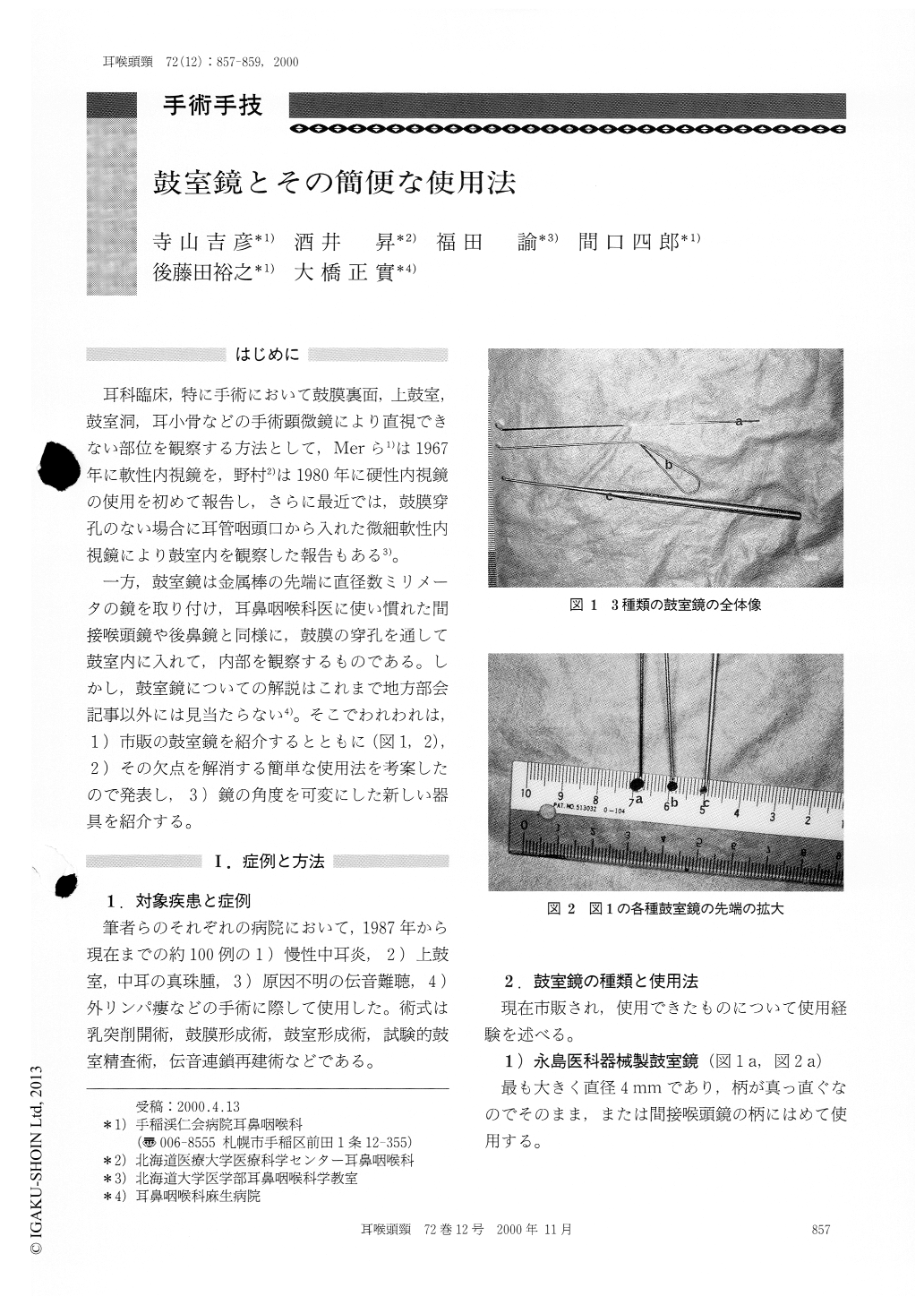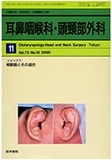Japanese
English
- 有料閲覧
- Abstract 文献概要
- 1ページ目 Look Inside
はじめに
耳科臨床,特に手術において鼓膜裏面,上鼓室,鼓室洞,耳小骨などの手術顕微鏡により直視できない部位を観察する方法として,Merら1)は1967年に軟性内視鏡を,野村2)は1980年に硬性内視鏡の使用を初めて報告し,さらに最近では,鼓膜穿孔のない場合に耳管咽頭口から入れた微細軟性内視鏡により鼓室内を観察した報告もある3)。
一方,鼓室鏡は金属棒の先端に直径数ミリメータの鏡を取り付け,耳鼻咽喉科医に使い慣れた間接喉頭鏡や後鼻鏡と同様に,鼓膜の穿孔を通して鼓室内に入れて,内部を観察するものである。しかし,鼓室鏡についての解説はこれまで地方部会記事以外には見当たらない4)。そこでわれわれは,1)市販の鼓室鏡を紹介するとともに(図1,2),2)その欠点を解消する簡単な使用法を考案したので発表し,3)鏡の角度を可変にした新しい器具を紹介する。
Tympanic mirror is very useful in otomicrosur-gery, however, not yet popular. The authors introduced four kinds of tympanic mirrors whichare now commercially available. Their merits and demerits were compared with those of tympanic endoscopes. The mirror is cheap and cableless. Its light depends on that of microscope. If it gets fog-ged, it can be clean by air stream produced by suction tube tip near the mirror. The disadvantages of the mirror are that the view is reversed and the endoscopes are small in diameter. The forcep-type with changable angle of mirror was considered to be best.

Copyright © 2000, Igaku-Shoin Ltd. All rights reserved.


